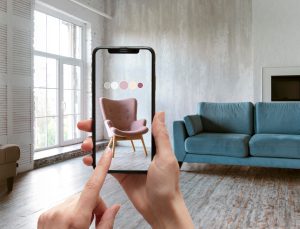
Virtual Reality (VR) is transforming the architecture industry by enabling immersive visualization, enhancing collaboration, and streamlining the design process. While its benefits are widely acknowledged, the costs associated with its implementation raise questions about the return on investment (ROI). In this comprehensive analysis, we’ll explore the various costs and benefits of VR in architecture and provide insights into how the technology can significantly impact design and construction projects.
The Costs of Implementing VR
Initial Hardware Investment
One of the primary costs associated with implementing VR in architecture is the investment in hardware. This includes high-quality VR headsets, powerful computers, and peripherals necessary for an immersive experience. The cost of VR headsets, such as the Oculus Rift S and HTC Vive, ranges from $400 to $800, while a high-end computer capable of running VR applications smoothly can cost over $1,500. Additional peripherals, such as motion controllers and sensors, further increase the initial investment.
Software Costs
Besides hardware, specialized software is required to create and visualize VR content. Licenses for professional VR design tools, such as Unity, Unreal Engine, and Enscape, can be costly, often involving subscription-based models or one-time fees. The software cost can vary widely depending on the tools chosen and the size of the architecture firm.
Training and Onboarding
Training employees to use VR tools effectively involves both time and financial investments. The learning curve can be steep, requiring training sessions, tutorials, and workshops to bring staff up to speed. For larger firms, this can translate into significant onboarding costs.
Maintenance and Upgrades
Maintaining VR systems requires ongoing costs for hardware maintenance, software updates, and occasional hardware upgrades. Keeping the technology up-to-date is essential to ensure compatibility with evolving software and to prevent disruptions in the design process.
The Benefits of Implementing VR
Enhanced Visualization and Design Quality
VR provides an unparalleled level of visualization, enabling architects and clients to experience designs in immersive 3D environments. This enhances the understanding of spatial relationships, proportions, and aesthetics, leading to more refined and innovative designs. It helps identify design flaws early, allowing for corrections before construction begins, ultimately improving the quality of the final product.
Improved Client Communication and Engagement
Presenting designs in VR significantly enhances client communication. Clients can virtually walk through their future buildings, providing immediate feedback and making informed decisions. This immersive experience reduces misunderstandings and improves client satisfaction, leading to smoother project approvals.
Streamlined Collaboration
VR fosters collaboration by creating a shared virtual space where architects, engineers, and stakeholders can interact with the design in real time. This reduces the chances of miscommunication and helps align everyone on the project’s vision, leading to better decision-making and project alignment.
Faster Design Iteration and Reduced Rework
VR enables rapid design iteration, allowing architects to modify designs and visualize the changes instantly. This accelerates the design process and reduces the time spent on revisions. Early identification of potential issues minimizes costly rework during construction, leading to significant savings.
Competitive Advantage
Firms that adopt VR gain a competitive advantage by offering advanced visualization capabilities that differentiate them from competitors. The ability to provide immersive design experiences can attract new clients and help retain existing ones, ultimately driving business growth.
Calculating the Return on Investment (ROI)
To assess the ROI of implementing VR in architecture, it’s essential to compare the costs against the potential savings and revenue gains:
- Reduced Rework Costs: By identifying design issues early, VR can significantly reduce costly rework during construction. Quantifying these savings is crucial in calculating ROI.
- Time Savings: Faster design iterations and improved client communication can accelerate project timelines, leading to cost savings and the ability to handle more projects concurrently.
- Increased Client Satisfaction: Improved client engagement and satisfaction can lead to more business opportunities, repeat clients, and referrals, contributing to revenue growth.
- Competitive Differentiation: Offering VR services can help attract more clients and charge premium fees, enhancing the firm’s revenue.
Conclusion
While the initial costs of implementing VR in architecture may seem significant, the potential benefits outweigh the investment. VR enhances visualization, streamlines collaboration, and improves design quality, leading to cost savings and increased business opportunities. By carefully calculating the ROI and considering the long-term impact, architecture firms can make informed decisions about integrating VR into their workflows, ensuring they stay competitive in an ever-evolving industry.





